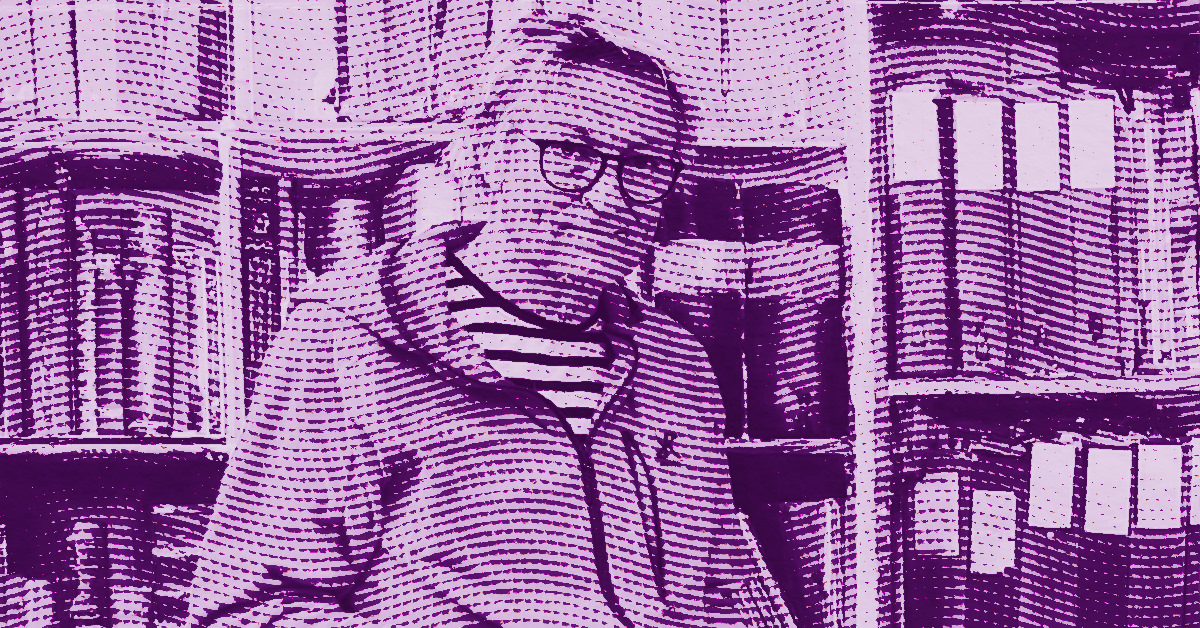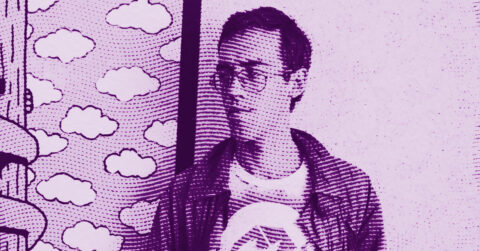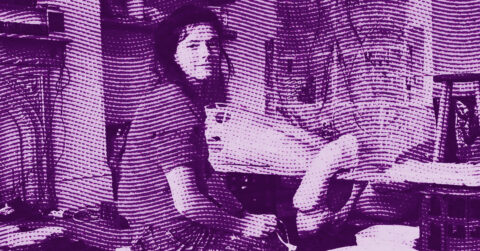Listen to me carefully, you bunch of snobs: if you still believe that watercolor is just a Sunday pastime for nostalgic retirees, then you have never contemplated the 450 centimeters of controlled chaos by Lars Lerin. This Swede, born in the forests of Munkfors in 1954, does not paint water, he sculpts time, Tarkovsky would say. And this metaphor is no coincidence.
In the Scandinavian art world, Lars Lerin holds a unique position that defies hasty classifications. Trained at the Gerlesborg School and then at the Valand School of Fine Arts in Gothenburg between 1980 and 1984, he has established himself as one of the most influential watercolorists of his generation, far beyond Nordic borders, touching the European and American soul. His permanent museum Sandgrund in Karlstad, inaugurated in 2012, attests to this institutional recognition, but it is in the direct confrontation with his monumental works that the true measure of his genius is revealed.
For Lerin operates a silent revolution in the art of watercolor. Where bourgeois delicacy is expected, he imposes poetic brutality. His formats, often exceeding 3 meters, transform the traditional intimacy of the medium into an immersive experience. “I paint what I see, not what I know,” he declares [1], a disturbing echo of Turner’s precepts that he seems to reinvent for our disenchanted era.
The temporality of Tarkovsky or the art of sculpting the moment
There is in Lars Lerin’s work a temporal quality that immediately evokes the cinematic universe of Andrei Tarkovsky. This kinship is no accident: it reveals a common approach to art as a metaphysical exploration of human existence in the face of natural vastness.
Tarkovsky, in his work Time Scanned, theorized cinema as an art of pure time, distinct from Eisenstein’s editing by its ability to capture real duration. Lerin’s watercolors proceed from a similar approach: they do not represent a frozen moment but carry within them the memory of the creative process, this “wet-on-wet technique” [2] that lets water and pigment interact according to their own physical laws.
This particular temporality manifests in his series of Lofoten, a Norwegian archipelago where he lived for twelve decisive years. His visions of Henningsvær or his Motifs from the Lofoten do not capture the tourist beauty of the landscapes, but their existential melancholy. As with Tarkovsky, darkness is not absence of light but revelation of a deeper truth. In Fjord (2015), seagulls fly low over the dark water while some buildings crowd the shore, “under the cover of the encroaching darkness” [3]. The handwritten script that traverses the work creates a distancing effect that Tarkovsky used to keep the viewer in a state of contemplative questioning.
Tarkovsky’s influence is also found in his treatment of architecture. The isolated houses of Lerin, these “caravans parked near a house” or these “garages in the Lofoten” evoke the ruined buildings of the Russian master, always on the verge of being reclaimed by nature. This architectural vulnerability expresses “the existential condition in an environment wrapped by the darkness of the arctic winter” [3], a central theme in Tarkovsky’s filmography where man remains eternally in search of meaning in the face of cosmic infinity.
But it is perhaps in his relationship to memory that Lerin most intimately joins Tarkovsky. His works operate through an accumulation of visual and textual memories, creating these “snapshots of memories that capture impressions of life and warmth as they perhaps no longer exist” [4]. This nostalgia is not complacent: it becomes an instrument of understanding, a means to access a poetic truth superior to simple naturalistic representation.
Lerin practices what one might call an “archaeology of the moment.” His travel notebooks transform into visual meditations where external geography reveals internal landscapes. This dual spatial and temporal exploration blossoms in his large compositions where “different blacks, ocher, and French ultramarine” [5] compose chromatic symphonies of rare sophistication. The artist does not seek to reproduce but to reveal, working “on a ping-pong table” [5] these gigantic formats that transform the studio into a laboratory of temporal experimentation.
The uncanny strangeness of the familiar
Lars Lerin’s work finds its particular depth in what Sigmund Freud calls das Unheimliche, the uncanny. This psychoanalytic notion, developed in 1919, designates that disturbing sensation which arises when the familiar suddenly reveals its hidden, secret, potentially threatening dimension.
In Lerin’s work, this uncanny operates on several levels. First in his treatment of everyday objects: his still lifes of “porcelain and glassware” transform domestic utensils into enigmatic presences. The chairs he paints become “portraits” according to curator Bera Nordahl, revealing “personal and relational characteristics in the style, wear, distance between the chairs, and their directional placement” [6]. These empty seats carry the ghostly imprint of their absent occupants, creating this tension between presence and absence characteristic of Freud’s unheimlich.
Even more disturbing, his work on the dioramas of the Natural History Museum of Gothenburg reveals the very essence of the uncanny. These “stuffed animals” he paints “inside the showcase” with “the background behind the photographer reflected in the glass” [6] create a world with multiple ontological layers. What are we looking at? The taxidermied animal? Its pictorial representation? The reflection of the living world in the showcase? This vertiginous layering directly evokes Freud’s analysis of automata and wax figures, those objects that blur the boundary between animate and inanimate.
Lars Lerin’s uncanny finds its most striking expression in his depopulated architectures. His isolated houses in the Swedish or Norwegian countryside are never simply picturesque: they carry within them a muted threat, that of abandonment, of disappearance. These buildings “vulnerable to ever-present elements” evoke what Freud identifies as the return of the repressed, here, the fundamental precariousness of our inscription in the world.
The handwriting that crosses his compositions adds an additional dimension to this unsettling strangeness. These fragments of text, often illegible, function as intrusions of the unconscious into the representational order. They create this “other dimension, association with the diary, with letters” [7] that the artist claims, but simultaneously generate a cognitive tension in the viewer, confronted with a message they cannot fully decipher.
This aesthetic of uncertainty reaches its peak in works where Lerin mixes mental photography and pure creation. Working “from direct impressions to more complex pieces” where he pauses and “restarts after some time for a fresher vision” [7], he establishes a temporality of the in-between that destabilizes our perceptual landmarks. His landscapes are neither entirely memory nor entirely observation: they occupy that intermediate space Freud identifies as the privileged territory of the unheimlich.
The alchemy of the ephemeral
Lerin’s technique reveals a paradoxical mastery: controlling the uncontrollable. This “wet-on-wet” approach, where the artist “sprays the entire sheet of paper and uses his pigments in intuitive color washes in the first minutes to achieve this atmospheric quality” [8], establishes a permanent dialogue with creative accident. This acceptance of the unexpected is part of an aesthetic tradition ranging from Turner to abstract expressionists, but Lerin adds his particular Nordic sensitivity to it.
His relationship to color reflects this search for balance between control and letting go. Favoring “different blacks, ochre and French ultramarine” [5], he builds his harmonies on earth tones and shadows rather than brilliance. This deliberately restricted palette generates an emotional intensity all the stronger for sparing its effects. His grays, “deep and dark, or ethereal and bright, seeming to illuminate the image from within magically” [9], reveal a profound understanding of the expressive powers of monochromy.
This chromatic economy serves a broader aesthetic project: to reveal the extraordinary in the ordinary. Lerin does not paint postcard landscapes but “existential conditions,” those moments when the human being is confronted with his fundamental solitude. His Nocturnal Walkers advance “towards us, wading through deep snow along a street where the northern lights can be seen shimmering in the sky above” [3], but all this beauty remains “behind the back of the nocturnal walker, he neither sees nor appreciates it. He is locked within himself in the cold.”
This melancholy is never complacent in Lerin. It proceeds from an artistic lucidity that assumes its cathartic function. As he explains himself: “Painting and working with images (and words) is my way of managing life, a kind of daily meditation, a routine” [7]. Art thus becomes an instrument of psychic survival, a means of transforming existential anguish into contemplative beauty.
This transformation takes place notably through the grandeur of his formats. His works of “206 x 461 centimeters” do not seek a spectacular effect but total immersion. They create a visual environment that envelops the viewer, forcing a physical as well as aesthetic experience. This embodied dimension of the aesthetic reception recalls that Lerin’s art does not address intelligence alone but the overall sensitivity of the human being.
The poetics of absence
At the heart of Lars Lerin’s aesthetics resonates a fundamental questioning of absence and loss. This concern runs through his entire body of work, from his early explorations in Värmland to his recent returns to the Lofoten archipelago documented by Swedish television in 2016.
Absence first manifests itself in his depopulated architectures. These houses, garages, and fish warehouses are never inhabited at the moment of depiction. They bear traces of human presence, wear, patina, and modifications, but remain fundamentally empty. This emptiness is not neutral: it questions our relationship to place, rootedness, and the permanence of human things in the face of natural indifference.
Absence becomes particularly poignant in his representations of domestic objects. His empty chairs function like hollow portraits, evoking through their mere arrangement the human relationships that shaped them. This ability to make the inanimate speak reveals a rare poetic sensitivity, capable of detecting the human in its most faint traces.
But it is perhaps in his treatment of temporality that Lerin develops his most sophisticated poetics of absence. His landscapes never capture the present moment but always a bygone or suspended time. This ghostly temporality is expressed in his very technique: the watercolor captures the evaporation of water, turning the process of disappearance into an aesthetic event.
This aesthetic of evanescence finds its culmination in his most recent works, where the artist explores “des pays lointains, ainsi que du coin de la rue dans le Värmland” [10]. This expanded geography does not dilute his poetics but universalizes it: everywhere, man remains confronted with the same existential questions, the same anxieties regarding the passage of time and crumbling certitudes.
Lars Lerin’s work thus constitutes a continuous meditation on the contemporary human condition. In an increasingly urbanized and dematerialized world, he keeps alive a sensual and spiritual relationship to nature and time. His watercolors function as oases of contemplation amidst the accelerated flow of our era, reminding us that art retains this unique power to slow time and deepen our relationship to reality.
This ability to touch the universal through the particular explains Lerin’s considerable success in Scandinavia and beyond. His exhibitions attract crowds who rediscover in his landscapes a part of themselves forgotten or repressed. For beyond his indisputable technical virtuosity, Lerin possesses the rare gift of revealing the melancholic beauty of the world, a beauty born precisely from the awareness of its fragility.
Faced with his large compositions, the viewer experiences what one could call a “Nordic sublime,” a mixture of aesthetic elevation and metaphysical anguish characteristic of Scandinavian sensibility. This aesthetics of ambivalence, where beauty and unease intertwine inextricably, places Lars Lerin among the most authentic artists of our time, those who refuse easy consolations to confront directly the ultimate questions of human existence.
His influence now extends far beyond the narrow circle of watercolor enthusiasts. Recognized by the Royal Academy of Fine Arts in Stockholm, winner of the August 2014 prize for his book Naturlära, and Sweden’s television personality of the year 2016, Lerin embodies this rare figure of an uncompromisingly aesthetic popular artist. His ability to simultaneously reach the cultural elite and the general public testifies to the authenticity of his artistic approach.
This success must not, however, overshadow the radical nature of his aesthetic project. By reinventing the Nordic watercolor, Lerin offers an alternative to the dominant conceptual art of our time. He advocates a return to the sensory roots of creation, this “daily meditation” [7] that makes the studio an existential as well as aesthetic laboratory.
This unique position in the contemporary artistic landscape allows him to explore emotional territories often neglected by official art. His works speak of solitude without self-pity, melancholy without complacency, anxiety without despair. They reveal this “existential nostalgia common to all of us” [4] that our technical civilization tends to repress or medicalize.
Lars Lerin’s art thus reminds us that the primary function of art remains the exploration of the human condition in its most fundamental dimensions. In the face of the acceleration of the contemporary world, his watercolors offer an alternative time, that of active contemplation and silent recognition of our common vulnerability before the vastness of the world.
This lesson in aesthetic wisdom places Lars Lerin among the essential creators of our time, those who keep alive the humanist tradition of European art while adapting it to contemporary sensibilities. His work constitutes a bridge between the ancestral concerns of the Nordic man and the universal questions of our late modernity, offering everyone the possibility of finding, during a moment of contemplation, that part of eternity that lies in all true art.
- Konstantin Sterkhov, “Lars Lerin Interview”, Art of Watercolor, 2012
- Hanna August-Stohr, “The Watercolor Worlds of Lars Lerin”, American Swedish Institute, Minneapolis, 2016
- Galleri Lofoten, “A new approach to Lofoten, Lars Lerin”, 2025
- Bera Nordal, Nordic Water Colour Museum, “Watercolour technique is a powerful tool”, 2011
- Konstantin Sterkhov, “Lars Lerin Museum Interview”, Art of Watercolor, 2013
- Susan Kanway, “Lars Lerin at American Swedish Institute”, Art As I See It Blog, 2016
- Konstantin Sterkhov, “Lars Lerin Interview”, Art of Watercolor, 2012
- Hanna August-Stohr, “The Watercolor Worlds of Lars Lerin”, American Swedish Institute, Minneapolis, 2016
- Galleri Lofoten, “Lars Lerin Exhibition Description”, Gallery Lofoten, 2025
- Sune Nordgren, “As Fast as The Eye”, The Royal Academy of Fine Arts, Stockholm, 2025
















